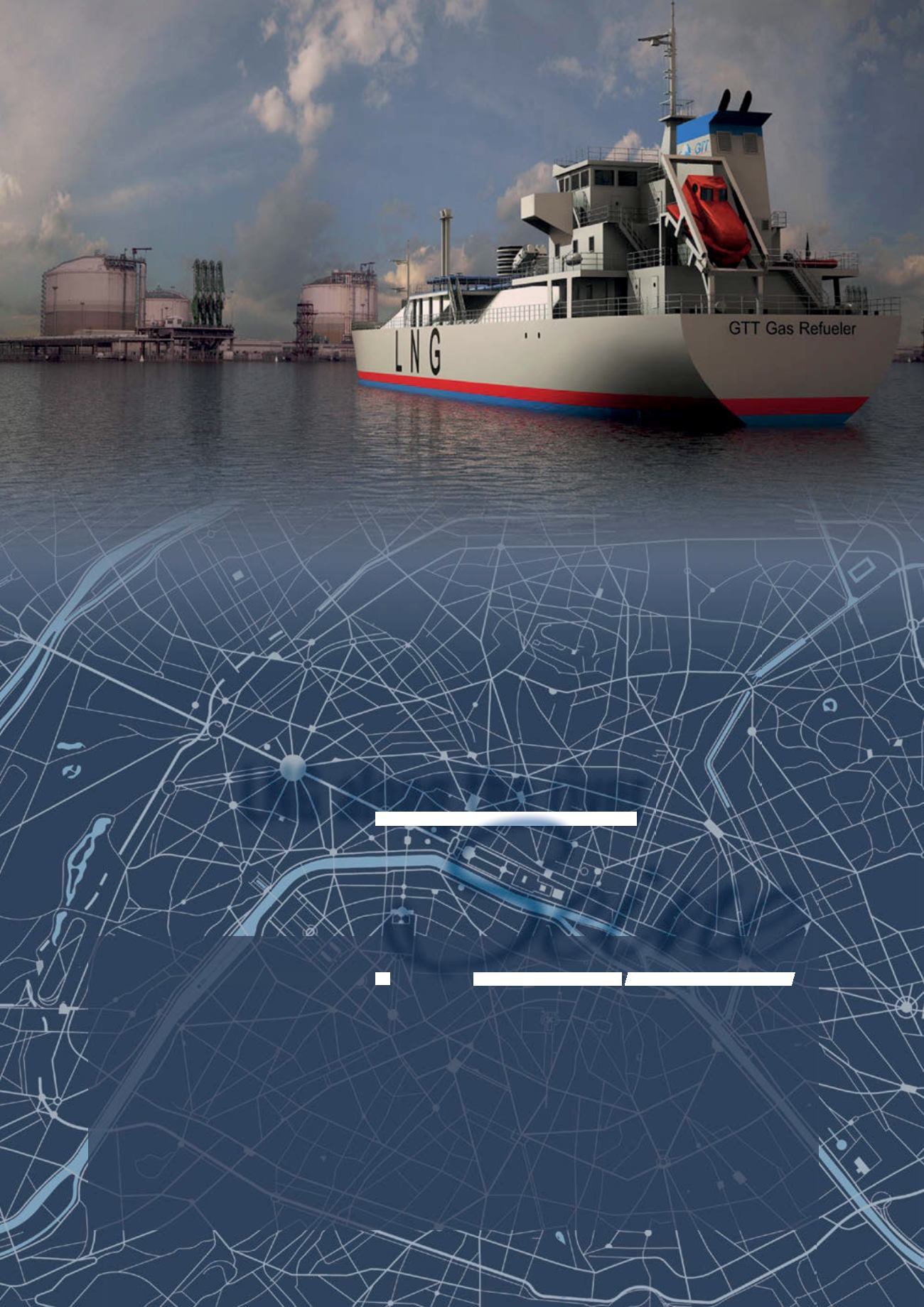
61
T
he marine pollution (MARPOL) international
convention (annex VI), which was integrated into
European Union (EU) law by directive 2012/33,
has set out a schedule for the reduction of sulfur oxide
emissions from ships sailing in the English Channel,
North Sea and the Baltic sulfur emission control area (SECA)
zones in order to improve air quality.
In early 2014, to help the shipping sector find
appropriate solutions to the new environmental
regulations, the Le Havre, Rouen and Paris (HAROPA)
ports, together with the ‘Ports Normands Associés’ (PNA),
the ‘Syndicat Mixte’ of the Port of Dieppe and the General
Council of the Seine-Maritime (Figure 1) area, initiated a
collaborative study, named
Study for Alternative Fuels and
Experiment in Seine and Channel Area
(SAFE SECA), which
had the following aims:
To guarantee the complete safety of alternative fuel
bunkering operations in their ports by adjusting local
regulations and training the port staff involved.
To identify competitive and environmentally friendly
solutions in terms of supply, storage and distribution of
low emission fuels, especially LNG.
As the ports involved are keen to play a role in the LNG
bunkering market, the study covered all technical,
operational and economic aspects.
LNG along the river
Victor Gibon, Marine Assistance, and Tiphaine Leroux,
Axe Environnement, France,
look at a recent study by
French port authorities into the technical, operational
and economic aspects of LNG bunkering.
Seine
LNG bunker vessel/concept design (Marine Assistance/GTT).


